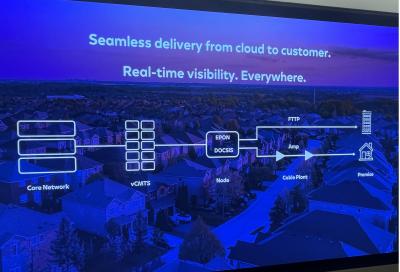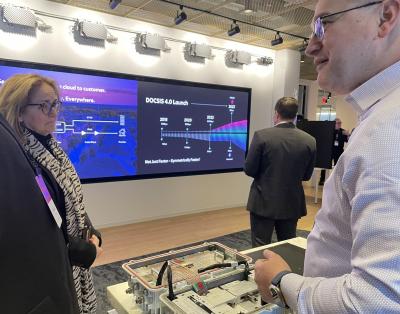-
Comcast hosted media and analysts at Comcast Converge this week
-
Chief Network Officer Elad Nafshi said edge cloud is poised to play an increasingly important role in Comcast’s broadband network
-
He added it is also exploring additional use cases around latency
“I know you’re a cable company, but talk to me about the cloud for a second,” I prompted Comcast Cable Chief Network Officer Elad Nafshi during Comcast Converge in Philadelphia this week. That was all it took and we were on our way.
The TL:DR version of what follows is the edge cloud is poised to play an increasingly important role in Comcast’s broadband network. Here’s why.

Comcast has spent the past five years or so investing in edge data centers in order to virtualize its network architecture. The first application to make the leap to the cloud was the cable modem termination system (CMTS).
The CMTS used to be a piece of hardware at the headend which was used to communicate with customer modems to provide high speed data services. Now, though, the CMTS is now a piece of software known as the vCMTS. And it sits in Comcast’s edge cloud.
“This is effectively an edge compute cluster that is running the CMTS as an application,” Nafshi said.
Nafshi declined to disclose the exact number of edge locations Comcast has beyond stating it has “many, many of those deployed across our network” to support the national deployment of its vCMTS.
He added each cluster uses Intel X86-based off-the-shelf hardware but said the number of servers in each location depends on how many customers Comcast is aiming to serve. It could be anywhere from tens of thousands to hundreds of thousands of servers, he added.

“The nice thing about the edge compute side is it’s a trade off between blast radius and efficiency. You don’t want to create these to be too big to fail,” he said.
Expanding edge ambitions
Comcast’s interest in the cloud isn’t limited to how it can be used for the vCMTS.
Nafshi pointed to Comcast’s previously announced trial with Vapor IO and said the operator is eyeing what other services it makes sense to run at the edge. While he declined to disclose what exactly these might be, he said they involve applications which are latency sensitive.
An educated guess would point toward services around gaming, VR and more. Given the rest of Comcast’s presentation at the event, it wouldn’t be unlikely that it’s looking at ways to deliver live sports experiences using the edge cloud as well.
But that’s not all.
Nafshi said Comcast is also looking at “extending into the core network where we’re now looking to take the same playbook effectively and run it on the core by disaggregation.” Why? “It’s the software controllability.”
He explained operators have traditionally thought about the different parts of the network – the core network, the CMTS, nodes, gateways – as separate and have taken decisions around each in isolation. That's not the case any longer for Comcast.
“The reality is what we’ve built is a true cloud to ground implementation…it’s all CI/CD, it’s all fully automated and it’s scalable that way," Nafshi said. He noted Comcast implemented hundreds of thousands of software tweaks last year, 99% of which were automated.
"So, you’re able to innovate much faster, you’re able to be much more reliable and drive the services that customers expect," he concluded.